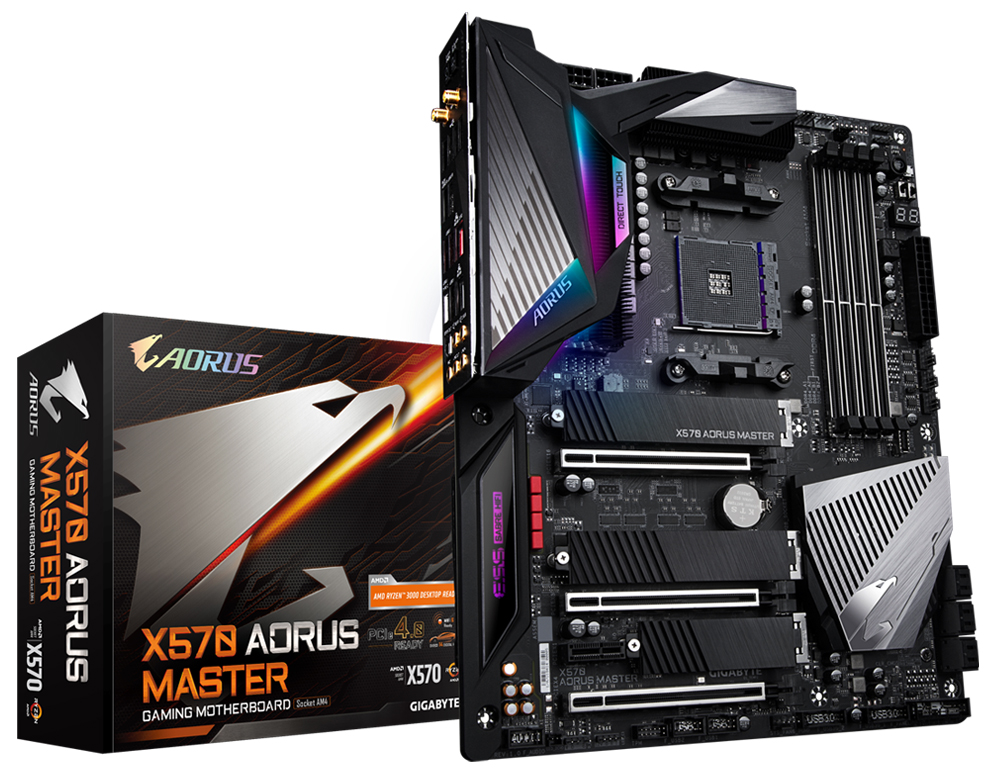Gigabyte Shares AMD Ryzen 3000 Per CCX Overclocking Beta
This should help overclockers score better overall performance.
Overclocking on the AMD Ryzen 3000 platform has brought questionable results, and this has a lot to do with the way AMD’s latest CPUs handle their boost frequencies. One of the ways proposed to potentially improve this is per-CCD overclocking, which was revealed recently to become a possibility on AMD’s Ryzen Threadripper 3000 series’ TRX40 motherboards. Now, it appears that the feature is also coming to the mainstream platform, as a beta BIOS has just arrived for Gigabyte’s X570 Aorus Master motherboard.

The BIOS in question is version TD0. Gigabyte product marketing manager Matthew Hurwitz has shared it on the Overclock.net forums. However, take note that Gigabyte hasn’t posted it on its own product page site yet because it still needs to go through testing to ensure stability. We should emphasize that this BIOS is still in its beta phase, and that you should avoid using it in a system you rely on to be your daily driver as it may not be perfectly stable across the board.
"Because this is a test BIOS it may break other functions. Please do not use this as a daily driver. Its for people who want to experiment with a new feature only," Hurwitz warned.
Why is per CCX overclocking relevant?
The AMD Ryzen 3000 CPUs come with one or two-core chiplet dies (CCDs) each, depending on their core count. Each CCD contains two AMD CCXes. An AMD CCX refers to a 4-core group and their CPU caches. That results in 8 cores per CCD and up to 16 cores per CPU. (The Ryzen Threadripper CPUs will naturally have a much higher CCD count. To see what this looks like on the CPU die, check out this article).
The issue with this construction is that some CPU cores perform better than others, and it appears that AMD’s method for rating boost frequencies is based on the ability of only a few cores hitting the rated boost frequency. The remainder of the cores merely have to run stable above the advertised base frequency.
This approach differs from Intel’s boost clock rating, as when Intel says a CPU will boost up to, for example, 4.7 GHz, it means that all of the cores are able to boost up to that frequency.

Consequently, overclockers have had trouble reaching overclocks near the advertised boost speeds.
Get Tom's Hardware's best news and in-depth reviews, straight to your inbox.
CCX overclocking can be particularly interesting because it allows users to overclock the CPU cores in groups, rather than slapping one overclock onto all CPU cores that may not be well-supported by each cores and, thus, is limited by the weakest core. With CCX overclocking, each CCX’s maximum overclock would only be limited by the weakest core in each CCX, rather than the weakest core in the entire CPU.
Niels Broekhuijsen is a Contributing Writer for Tom's Hardware US. He reviews cases, water cooling and pc builds.
-
Thron That's fine, but when Amd was behind, we had the option of overclocking, for better performance, but not the best, but the most percentage. now they are up front and there is no overclocking for high performance, beyond a few percent. and the price has increased per cpu, = compared to intel pricing and performance. not goodReply
Yours sincerely
AMD forever ;-)
